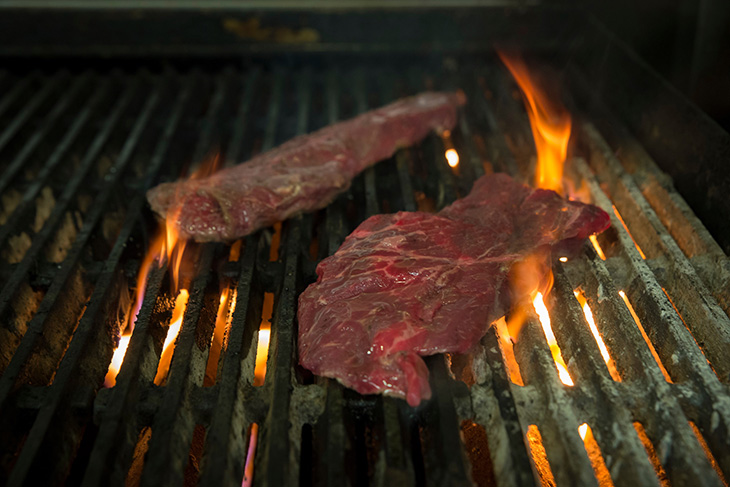
Summer is finally here, and the beef industry hopes it will help increase demand
Monday, July 1, 2019
Much of the United States has been mired in atypical weather patterns the past several months, and that seems to have limited seasonal beef demand.
“Most of Oklahoma did not experience the first 90-degree [Fahrenheit] day until about June 20, much later than normal,” said Derrell Peel, Oklahoma State University Cooperative Extension livestock marketing specialist. “The summertime grilling season – which often starts when the calendar technically says it’s still spring but the weather warms up – hasn’t really gotten going as yet.”
After early beef buying in April for Memorial Day, boxed beef cutout values have weakened, averaging 3.8 percent lower year-over-year for the last six weeks. The daily boxed beef price just over a week past had decreased 6.2 percent from the peak price in late April.
Peel said the weakness has been most pronounced in the high-value middle meats, with loin primals averaging 7.9 percent lower year-over-year for the last six weeks and rib primals averaging 5.5 percent lower year-over-year for the same period.
“Both chuck and round values have showed more strength recently,” he said. “Encouragingly, the ground beef market is showing a little life with both lean trimmings and 50 percent trimmings currently priced a bit higher compared to last year.”
Round primals decreased only 1.8 percent year-over-year and chuck primals actually increased an average of 1.3 percent during the last six weeks compared to the same period last year.
As always seems to be the case, even in strong price years, the upcoming Independence Day holiday will be critical for the summer beef demand season.
“There will likely be a lot of pent-up demand for outdoor activity if the weather permits,” Peel said. “However, the extended forecast for the period indicates a likelihood that large chunks of the country will continue to experience below average temperatures. Moreover, continued flooding and swollen rivers and lakes in some regions will limit recreational activities for some time yet.”
The most recent U.S. Department of Agriculture Cattle-On-Feed report showed June 1 feedlot inventories at 11.74 million head, approximately 101.6 percent of last year and a record June feedlot inventory for the data series back to 1996.
“No real surprises in the June 1 report, which was close to the pre-release expectations of most industry analysts,” Peel said.
May placements broke the previous three-month trend of higher year-over-year placements and finished at 97.2 percent of the figures for one year ago. Feedlot marketings in May were 100.7 percent of last year. For the first five months of 2019, feedlot placements have totaled 1.3 percent higher year-over-year and total marketings are 1.5 percent higher than the same period in 2018.
Oklahoma is the nation’s second-leading producer of beef cows, and fourth-leading producer of all cattle and calves, according to National Agricultural Statistics Service data. Oklahoma’s cattle industry adds approximately $3.7 billion annually to the state economy.
The Oklahoma Cooperative Extension Service is one of two state agencies administered by OSU’s Division of Agricultural Sciences and Natural Resources, and is a key part of the university’s state and federally mandated teaching, research and Extension land-grant mission.
MEDIA CONTACT: Donald Stotts | Agricultural Communications Services | 405-744-4079 | donald.stotts@okstate.edu
